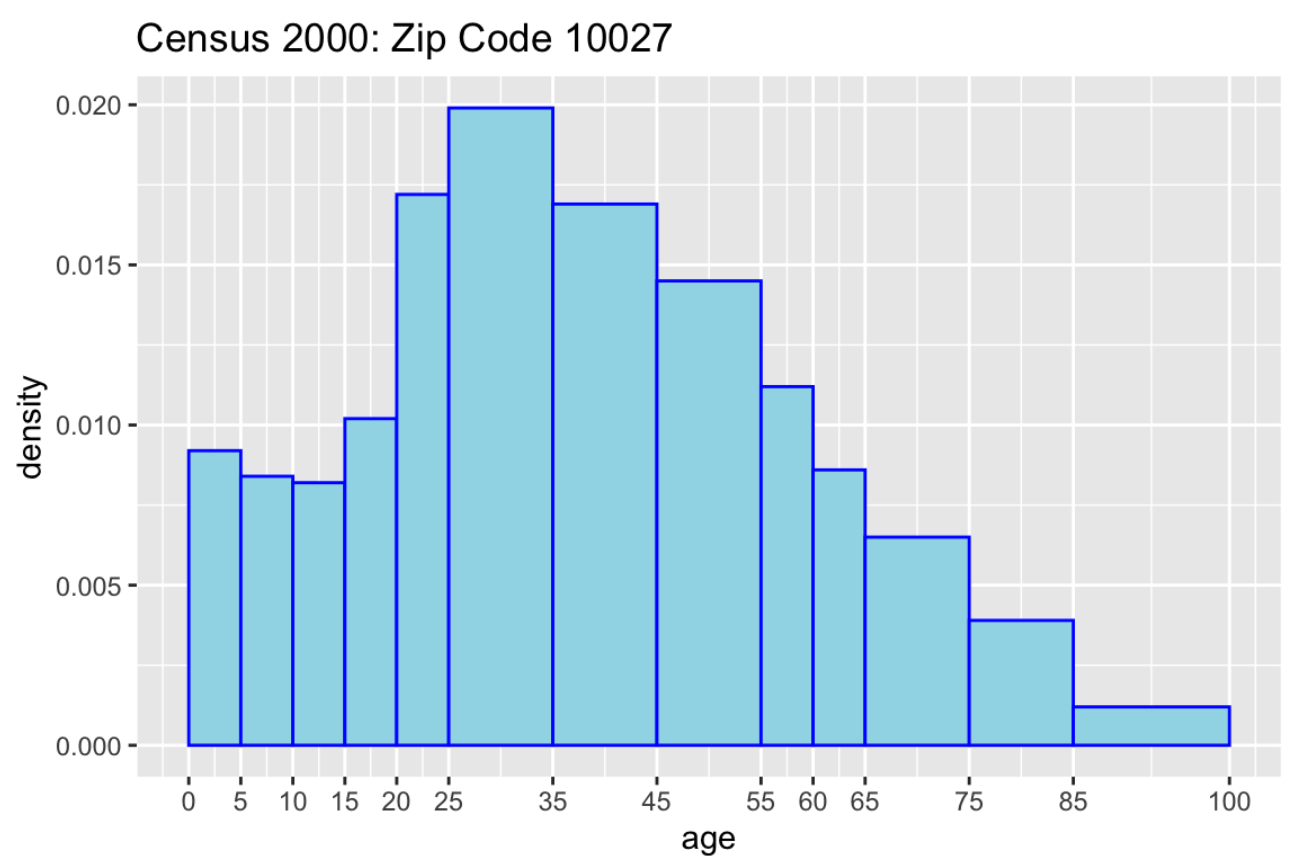Histogram
A histogram is a graph grouping data into intervals, and drawing a bar for each interval, shows the empirical distribution
- It's a discrete distribution, where events are intervals but not values
For example, the frequency histogram of data 50, 51, 53, 55, 56, 60, 65, 65, 68 with binwidth = 5.
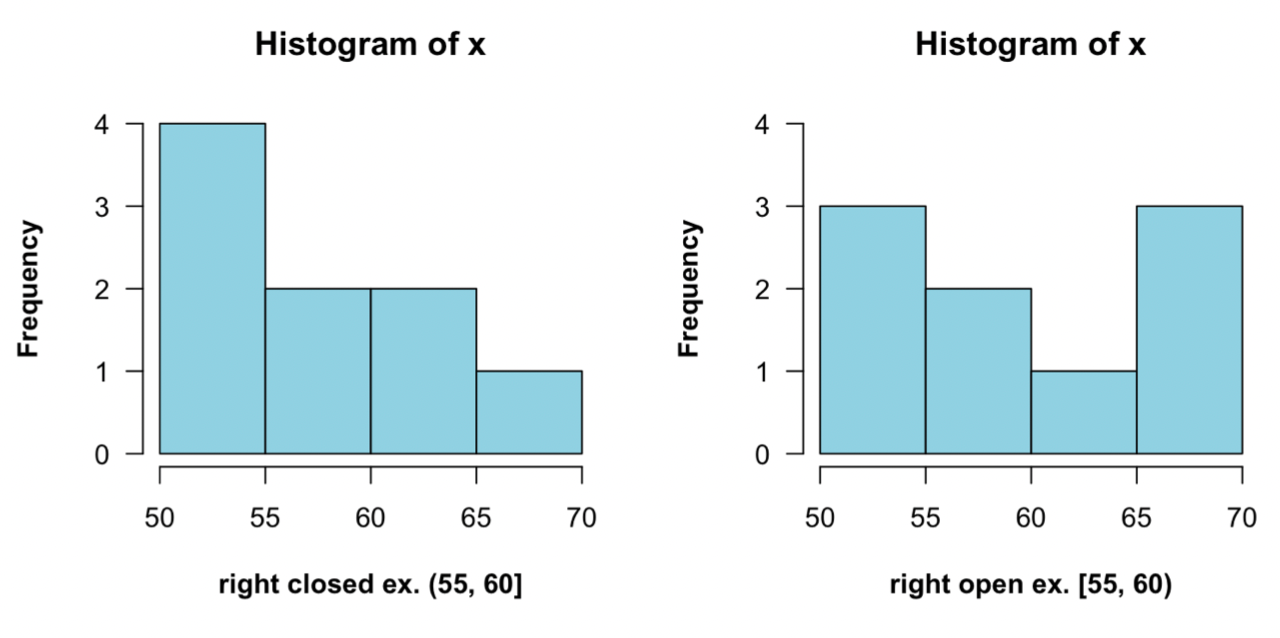
Elements
-
Boundaries
- Specify the boundaries to eliminate the confusion
- You can choose boundaries to be NON-round numbers, to make sure no data lie on the boundaries
-
Bin width
- Choose the right bin width to better present the data
- thin width will provide more details, but may not be necessary and give gaps
- thin bins are useful for looking for gaps and heaping
- wide width will wipe out much information
- thin width will provide more details, but may not be necessary and give gaps
- Changing the bin width can help discover the rounding pattern
- Uneven bin widths
-
When using uneven bin widths, use a density histogram
-
- Choose the right bin width to better present the data
Types
In a histogram, the x-axis is the Continuous Variable to be inspected. And Different y-scales give types of histograms.
- Frequency histogram
- Density histogram
-
In a density histogram, the area of a bar equals the relative frequency; thus the y-scale is the density:
-
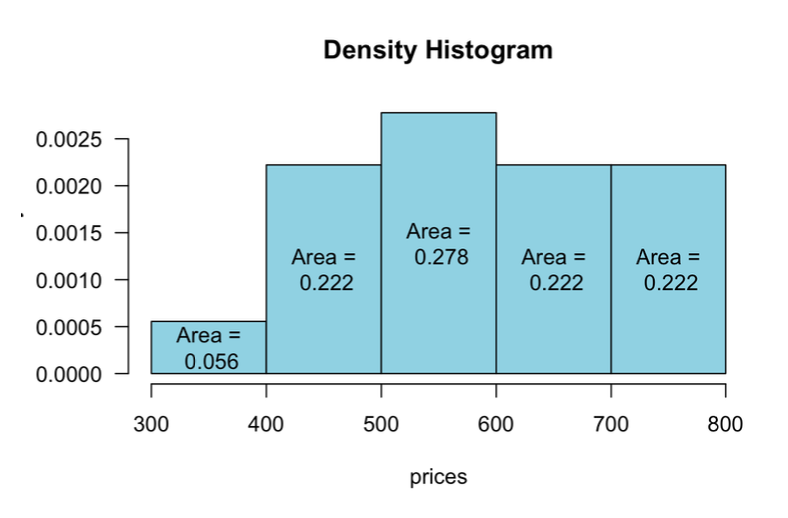
-
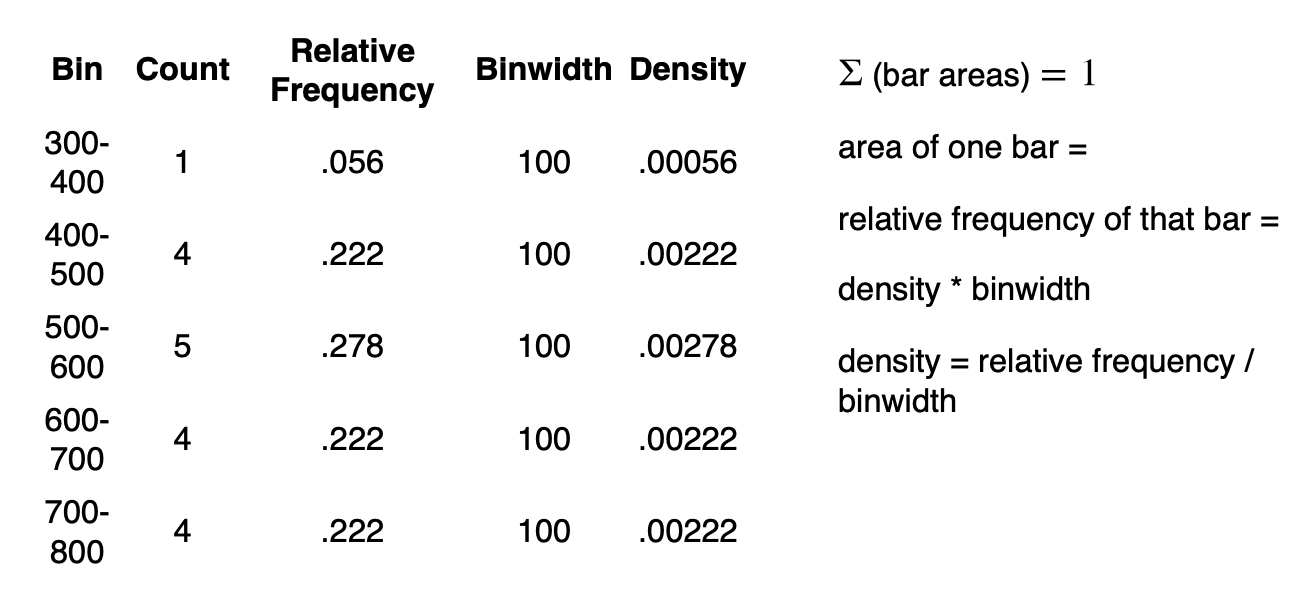
-
In ggplot2, use
y = ..density..to specify this scale -
It is also very useful to overlay a Density Curve (
geom_density())
-
- Cumulative frequency histogram
- is suitable when some frequencies are small to present
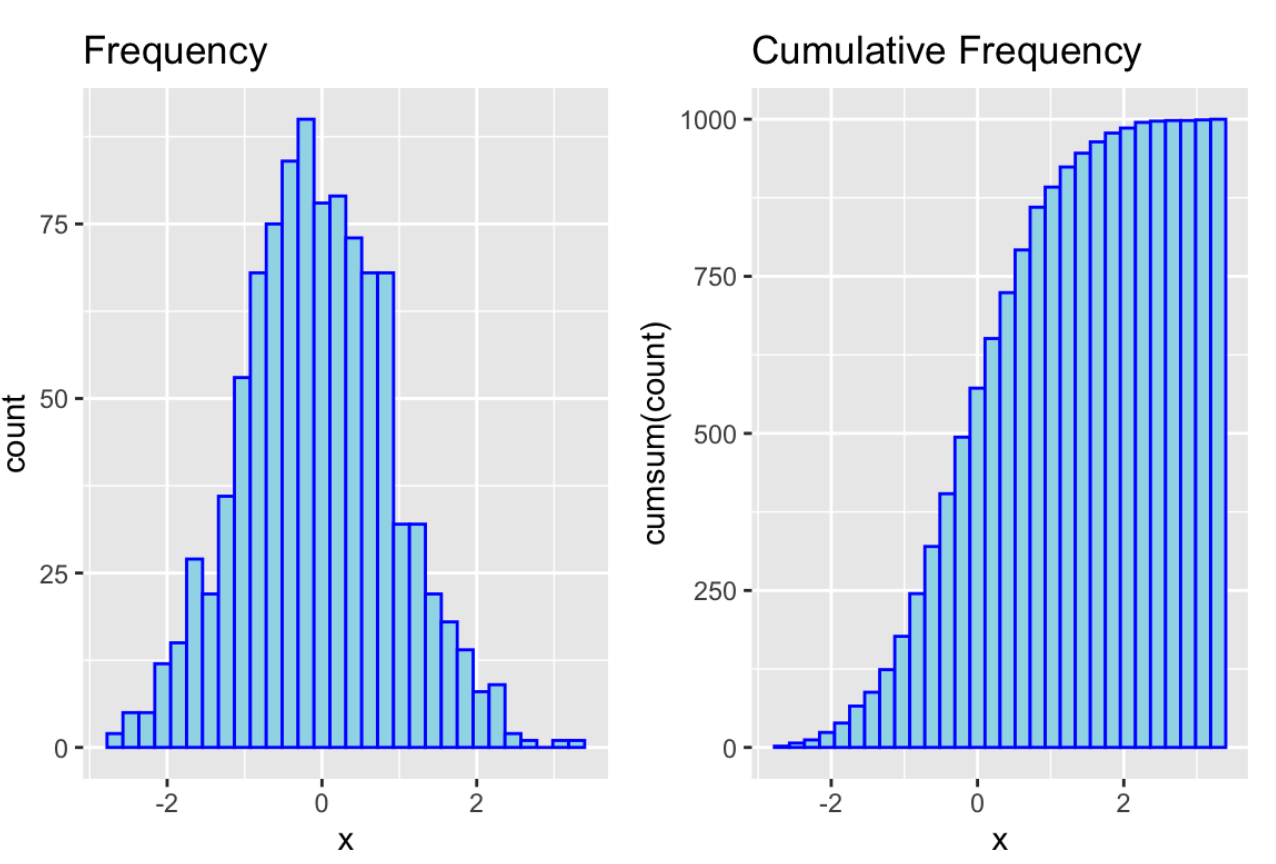
 by zcysxy
by zcysxy